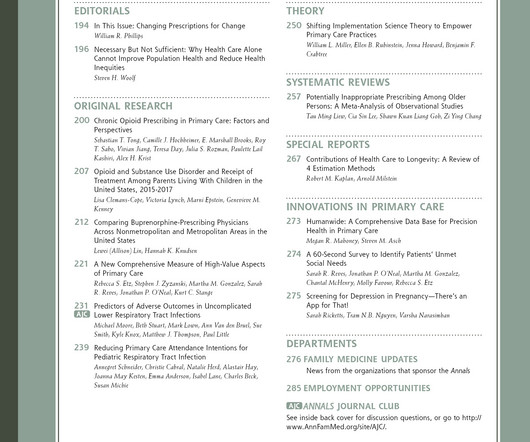Effects of the COVID-19 pandemic on primary care for diabetes in Canada: Results from a mixed-methods study [Health care services, delivery, and financing]
Annals of Family Medicine
NOVEMBER 20, 2024
Context: In Canada, most diabetes care is provided within primary care. Setting & Dataset: The CPCSSN database contains de-identified patient-level electronic medical record data from 13 primary care research networks across Canada. Median (IQR) BP measurements decreased from 3(0,6) pre-pandemic to 1(0,2) during-pandemic.





























Let's personalize your content